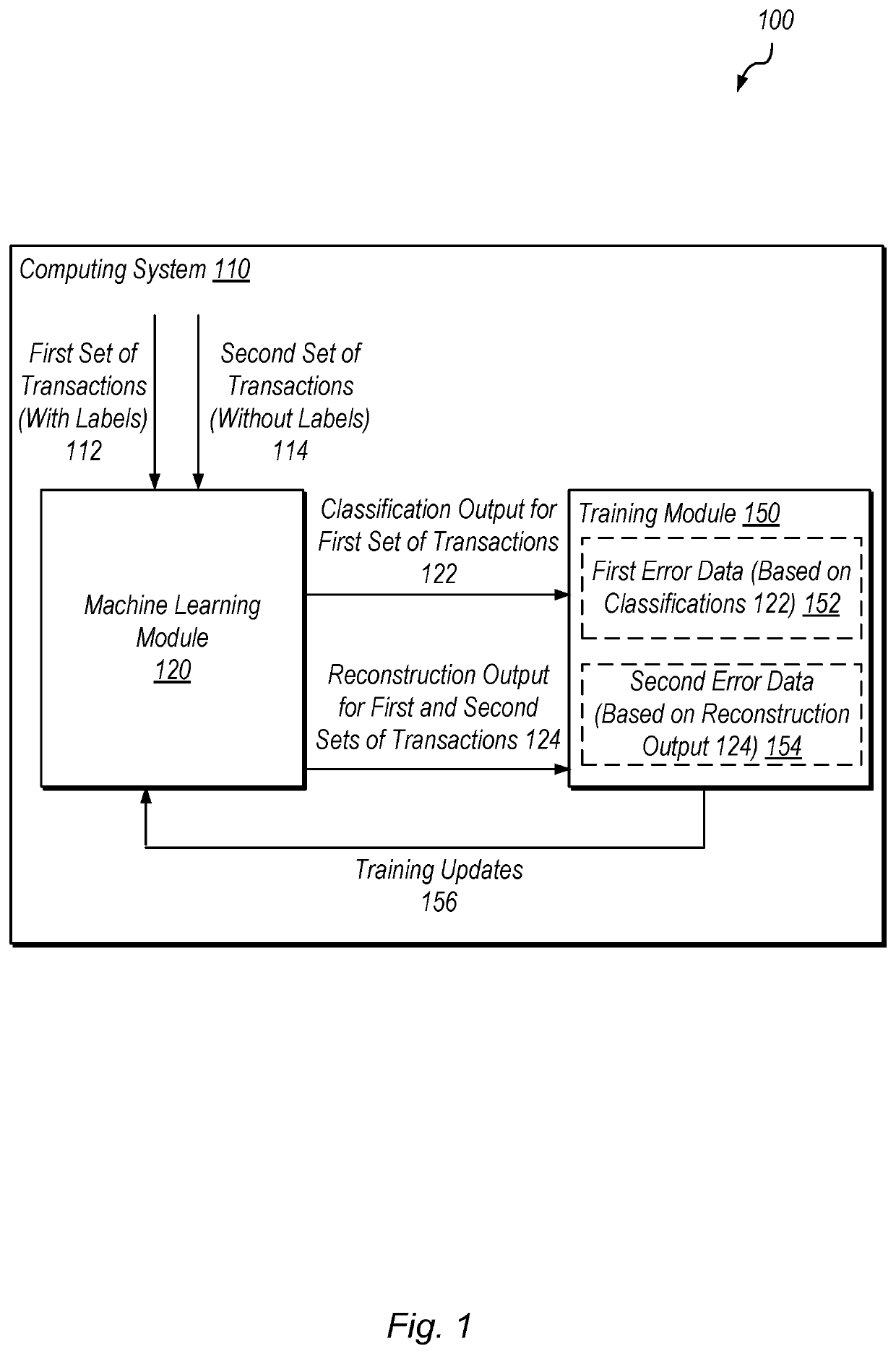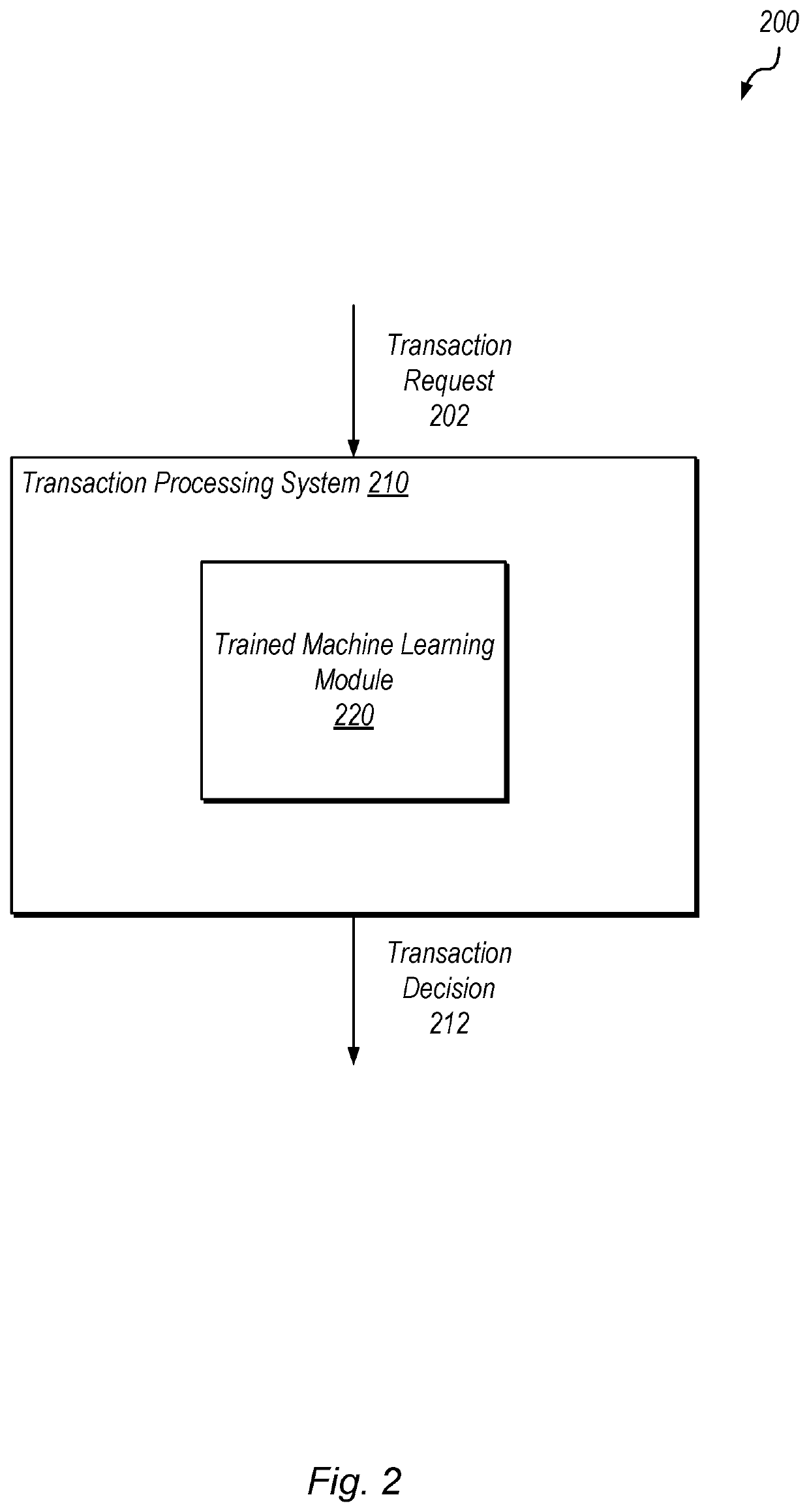Machine learning module training using input reconstruction techniques and unlabeled transactions
a machine learning module and input reconstruction technology, applied in machine learning, data processing applications, instruments, etc., can solve the problems of label (e.g., fraud or not) being unavailable for denied transactions, and the traditional inability of machine learning modules to train on denied transactions
- Summary
- Abstract
- Description
- Claims
- Application Information
AI Technical Summary
Benefits of technology
Problems solved by technology
Method used
Image
Examples
example training
[0024 with Unlabeled Transactions
[0025]FIG. 1 is a block diagram illustrating an example system configured to train a machine learning module. In the illustrated embodiment, system 100 includes a computing system 110 configured to train machine learning module 120 using training module 150.
[0026]Computing system 110, in the illustrated embodiment, inputs a first set 112 of transactions with labels and a second set 114 of transactions without labels into machine learning module 120. Labels may indicate, for example, designated classifications for various transactions, or other types of data labels in various other instances. Specifically, in the context of electronic monetary transactions, labels may indicate whether the transaction is considered to be fraudulent or not. In some embodiments, transactions included in the first set 112 and the second set 114 are electronic monetary transactions.
[0027]Note that classifying transactions as fraudulent is one non-limiting example embodimen...
example transaction
[0035 Classification
[0036]FIG. 2 is a block diagram illustrating an example system configured to process transactions using a trained machine learning module. In the illustrated embodiment, system 200 includes a transaction processing system 210 configured to process various transactions using a trained machine learning module 220.
[0037]Transaction processing system 210, in the illustrated embodiment, receives a transaction request 202. Transaction processing system 210 is configured to use trained machine learning module 220 to classify a transaction specified in request 202, according to various embodiments. Based on the output of trained machine learning module 220, transaction processing system 210 is configured to output transaction decision 212. In some embodiments, transaction decision 212 indicates whether the requested transaction is approved.
[0038]In some embodiments, transaction request 202 is received for processing from a payment application downloaded on a user device....
PUM
 Login to View More
Login to View More Abstract
Description
Claims
Application Information
 Login to View More
Login to View More - R&D
- Intellectual Property
- Life Sciences
- Materials
- Tech Scout
- Unparalleled Data Quality
- Higher Quality Content
- 60% Fewer Hallucinations
Browse by: Latest US Patents, China's latest patents, Technical Efficacy Thesaurus, Application Domain, Technology Topic, Popular Technical Reports.
© 2025 PatSnap. All rights reserved.Legal|Privacy policy|Modern Slavery Act Transparency Statement|Sitemap|About US| Contact US: help@patsnap.com



